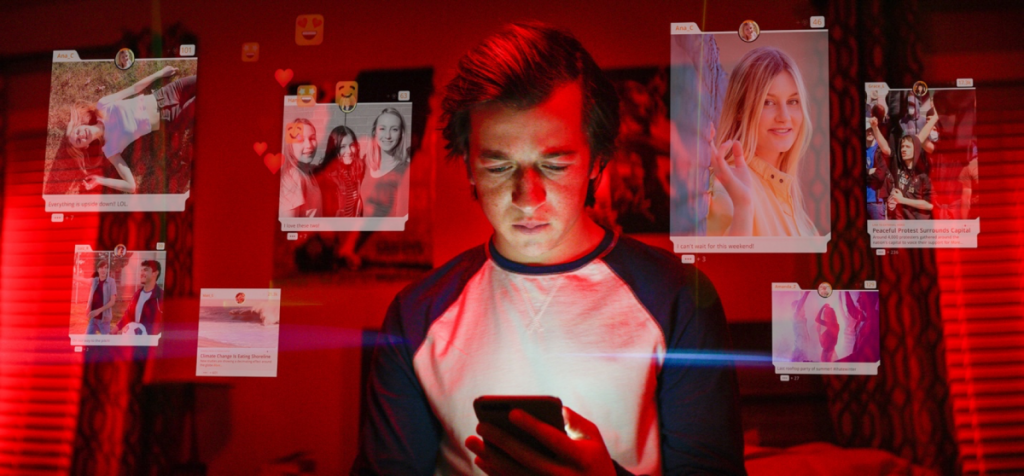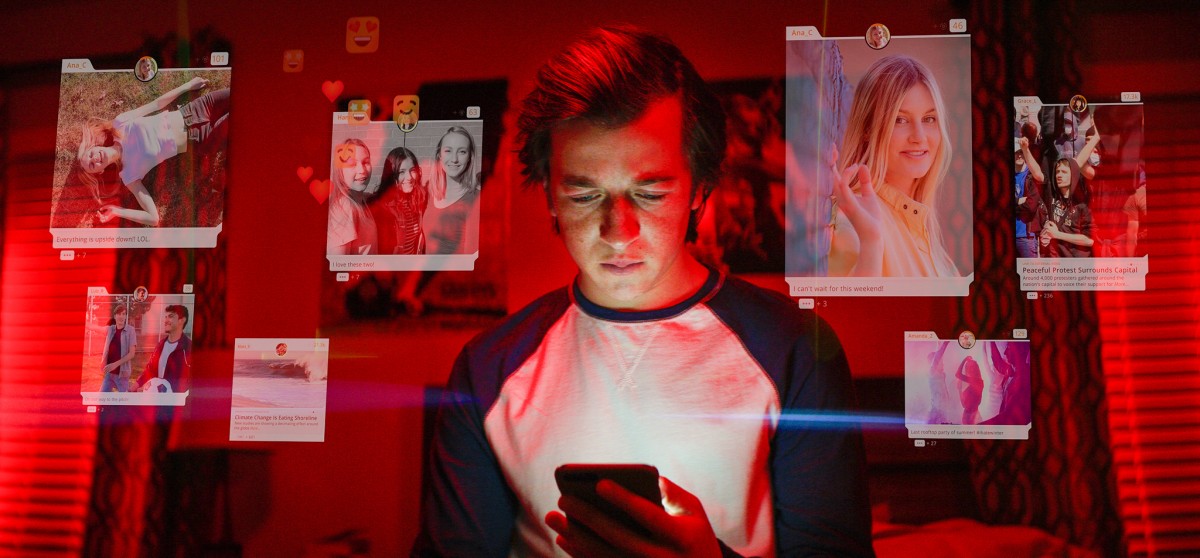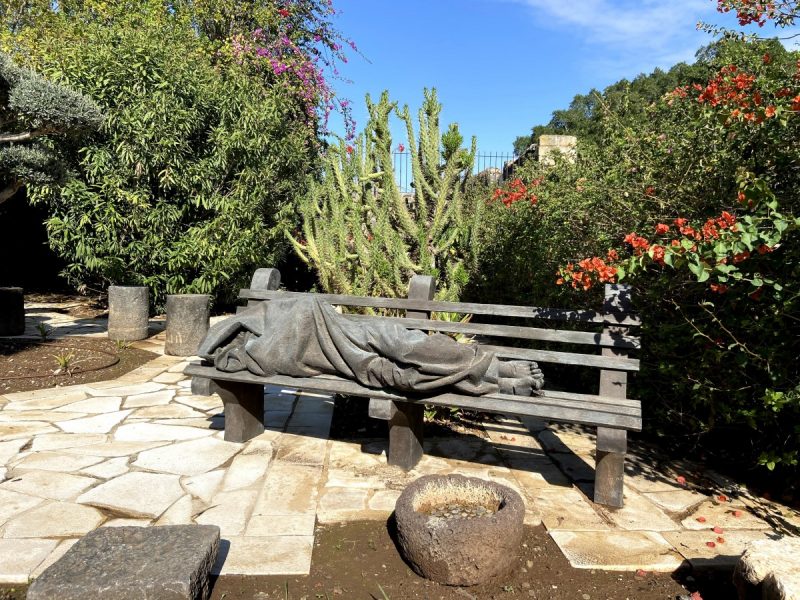by Angela Laughter for RE610: Be(com)ing Christian

Some may think today’s controversy over social media is no big deal. Clearly a force for so much good cannot be equally a force for bad. But the buzz around a new documentary proves otherwise. Watch The Social Dilemma and decide for yourself.
In her book, Teaching as a Sacramental Act, Mary Elizabeth Mullino Moore asks how to teach people to seek the larger goods when there is a human willingness ‘to settle for lesser goods’?1 She also shares stories of communities living in conflict and explores ways to ‘mediate God’s presence in an aching world’.2
After watching The Social Dilemma, which claims chaos and division as one of the most drastic consequences of social media, I found myself consumed with similar thoughts. How do we remind others and ourselves to seek the greater good of intentional relationships instead of settling for the lesser good of technology? How do we cultivate more attention toward each other and less attention toward our screens?
Most of us are all too familiar with the fact that our screens are poor substitutes for authentic encounter. So why do we have such a hard time walking away from them? Not surprisingly, The Social Dilemma spells out just how intentional social media is in holding our attention. It isn’t by accident that we can’t stop scrolling, liking, and checking.
Moore suggests that our churches can bring about more authentic encounter with each other, God, and his creation in several ways. While her writing was not specifically written to address today’s digital challenges, her insight on the physicality and mystery of the sacraments offers an excellent antidote to our dangerous obsession with technology. Moore believes that sacraments have a critical role to play in reminding people of the mystery and beauty of God.
The mystery and beauty of God – maybe this is something powerful enough to break the hold that social media has on our attention. Deanna Thompson echoes the significance of the sacraments to cultivate attentiveness in her book The Virtual Body of Christ. While exploring both the positives and the pitfalls of the digital age in church communities, she concludes that church leaders will do well to embrace this technological age as augmenting our life in community.
That said, how do church leaders embrace the power of good while navigating the real dangers to community as we know it? When asked about the overall impact of social media on churches, one local Catholic parish offered insight from several staff members. For the most part, these local leaders see social media as ‘essentially neutral’. The 24/7 social networking that seems to be having an overall negative impact on our youth (and often their parents) is also having an overall positive impact on the church community as a whole.
Citing the ability to have a ‘global’ congregation that can be reached ‘in ordinary moments…at home, at work, or out in the world’ is a real advantage that many churches appreciate. Many in church leadership see the ability to ‘offer inspiration and encouragement as part of their daily feed’ an enormous benefit of this digital age. But Pope Francis warns in Laudato Si,
"when media and the digital world become omnipresent, their influence can stop people from learning how to live wisely, to think deeply and to love generously. In this context, the great sages of the past run the risk of going unheard amid the noise and distractions of an information overload".3
One local director of communications at an Atlanta church specifically points to youth and their relationship to peers which clearly falls in this ‘omnipresent’ influence the pope has warned us about. Before social media, children had a break away from peers starting at the end of the school day until the next morning. Today’s digital world allows no time away from peers, no separation from either the good or the bad of social interaction. Our anxiety-ridden society must in some ways be related to the 24/7 aspect or our online ‘friendships’. There is little escape from the constant comparisons, the likes and the dislikes, the follows and the unfollows. I can’t imagine having grown up this way and I have daily challenges parenting four children through this reality.

The Director of Faith Formation & Evangelization at one parish describes technology as ‘a time suck’, an ‘obstacle that is louder, faster, and more manipulative’ than other obstacles that consume our attention. But she also sees technology as a ‘vehicle to share the Good News’ and, most importantly, share it with everyone. In her words, all people ‘have the opportunity to meet Jesus’, whether walking through the front door of the church or following the church’s social media.
There is no denying that the social dilemma is such because of the inherent good that exists side by side with the bad. Thompson believes we can still love generously even through technology but she echoes Pope Francis by asking ‘how do we negotiate the constant barrage of information and messages that infiltrate our lives?’4 She goes on to suggest an antidote: cultivating attentiveness toward what matters most.5 Thompson explores cultivating attentiveness through worship that results in deeper ‘practice of prayer, meditation on Scripture, and increased awareness of the needs of others’.6 She also highlights time spent in the country and close to nature as extremely effective in creating ‘greater attentiveness’.7
‘work against the temptation to foster inattentiveness and toward practices of attention on what matters’
Deanna A. Thompson, The Virtual Body of Christ
What do all of these voices tell us as we move forward navigating the uncertain waters of pandemic and political division? The voices in The Social Dilemma paint a dire picture. But I think their purpose is to shock us into seeking a larger good, using technology wiser, and working to limit its negative impact.
The voices of Pope Francis, Moore, and Thompson offer concrete paths forward in the physical encounter of sacraments, prayer and meditation on Scripture, and more time close to nature. Voices of our local church describe parishes benefiting greatly from their online presence but individuals suffering the unintended consequences of 24/7 social networks. Our best bet to avoid the ‘checkmate on humanity’ warned of in the closing moments of the documentary will be to shift our attention to what matters most. Hours spent endlessly scrolling Instagram are not time we can get back. We can’t get back that time and instead give it to our family or friends or church. But today’s hours? Today’s hours belong to us. We can choose how we spend our time and we can choose who or what gets our undivided attention.
Questions
- How can church leaders create space for parishioners to practice discerning ‘what matters most’?
- How do we serve our ‘neighbors’ in the wider community using technology as a valuable tool while not forgetting the neighbor who truly lives next door?
- Has your church re-opened since the pandemic? If so, are you experiencing more appreciation to detail and heightened senses when you get to be physically present in your church space?
[1] 1 Moore, Mary Elizabeth Mullino, Teaching as a Sacramental Act. Cleveland, Ohio; The Pilgrim Press, 2004, 1-2
[2] Ibid., 7
[3] Francis, Pope. On Care for Our Common Home: Laudato Si’: The Encyclical of Pope Francis on -the Environment. Translated by Sean McDonagh. Maryknoll: Orbis Books, 2016, 32
[4] Thompson, Deanna A. The Virtual Body of Christ. Nashville: Abingdon Press, 2016, 79
[5] Ibid., 80
[6] Ibid., 91
[7] Ibid., 80




1 Comment
Add Yours →I have such a tense relationship with social media. It is a part of our lives, just like technologies before, but I do feel that the risk of inattention is quite great. In response to your first question on discernment, I think we also need to be able to evaluate social media (and perhaps its algorithms) critically. This work takes some education in media literacy.
In response to something you say at the beginning of this post, I am not sure I would place “intentional relationships” in the greater good category and technology in the “lesser good” category. I think with Thompson, that they aren’t necessarily alternatives to each other (but we certainly can all think of times when we found ourselves hurt because someone chose a text message over a heartfelt face-to-face conversation!).